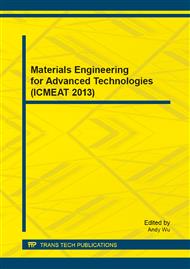p.174
p.179
p.185
p.193
p.197
p.202
p.208
p.215
p.220
Numerical Simulation for Air/Oil Separator of Aero-Engine
Abstract:
Presently numerical simulation of separator is based on the assumption that all the droplets can be separated once they impinge the wall. However, large oil droplets may splash into small particles, which result in lower separation efficiency. A modified simulation model is presented in this paper to model the impact behavior of oil droplet. Some semi-empirical computational models are introduced to calculate the number and diameters of the secondary droplets. Then, the performance of a typical air/oil separator is predicted, including the separation efficiency and the minimum diameter. Results show that about the efficiency may reduce 1~2% due to the splash phenomena. While, no obvious difference is observed.
Info:
Periodical:
Pages:
197-201
Citation:
Online since:
February 2014
Authors:
Price:
Сopyright:
© 2014 Trans Tech Publications Ltd. All Rights Reserved
Share:
Citation:


